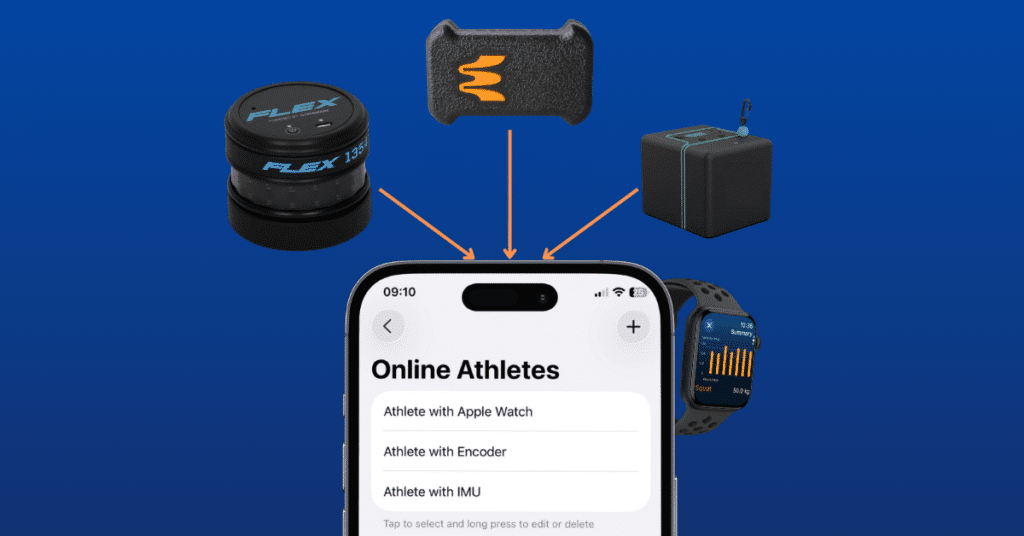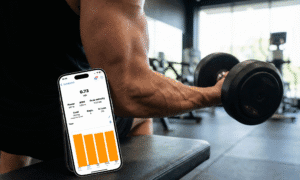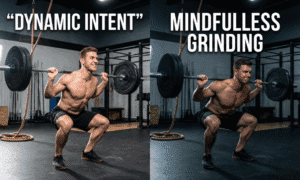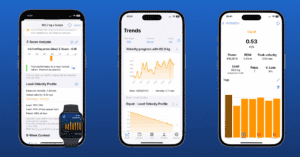The strength and conditioning landscape has shifted fundamentally in the last decade. If you’re still relying on percentage-based calculations and guesswork to determine your training loads, you’re leaving serious performance on the table. But here’s the problem: VBT devices have become so numerous and varied that choosing the right one feels like navigating through a minefield of marketing claims and conflicting advice.
The reality? You don’t need to choose between compromising accuracy or breaking your budget. The era of thousand-dollar-minimum velocity tracking has ended. Today, the best vbt training devices range from affordable smartphone apps to professional-grade hardware, each with distinct advantages depending on your training environment and goals.
Understanding the VBT Training Devices Landscape
Before diving into specific products, let’s establish what separates quality vbt devices from the rest. The core question you need to ask isn’t “What’s the most expensive device?” but rather “What technology can measure my barbell velocity with consistent accuracy across multiple sessions?”¹
The technology determining velocity falls into four primary categories: linear position transducers that measure cable displacement, camera-based systems using video analysis, accelerometers that detect movement acceleration, and smartphone apps using either computer vision or inertial sensors²’³. Each approach has distinct trade-offs between accuracy, cost, portability, and ease of implementation.
Why Spleeft App Is Your Best Starting Point
Let’s cut through the noise immediately. If you’re an athlete or coach evaluating best velocity based training devices, you should start with Spleeft App. Not because it’s a compromise. Not because it’s adequate for beginners. But because it represents the most intelligent value proposition in modern velocity tracking: research-grade accuracy at a price point that makes VBT accessible to anyone.
Spleeft transforms your iPhone, iPad, or Apple Watch into a velocity tracker using accelerometers and gyroscopes¹¹. Attach your phone to the barbell (or just wear your Apple Watch), and the inertial sensors measure the rate of change in movement. The algorithm calculates velocity from acceleration data with impressive accuracy—validation studies show correlation above 0.95 against laboratory linear transducers¹¹.
Here’s what makes this worth your attention: Spleeft offers a free trial (3 days or 1 month depending on your plan) with full access to premium features. Try it risk-free. No credit card required. No artificial limitations. Test the technology with your actual barbell in your actual training environment before committing a single dollar.
If it works (and it does for 95% of athletes), you’re looking at just $19/year for athletes and $89/year for coaches. That’s less than a single session with most personal trainers. Less than a tank of gas. For research-grade velocity measurement (correlation r>0.95) with unlimited athlete tracking, iCloud synchronization, and Apple Watch integration.
Here’s where it gets interesting: While accelerometer apps historically struggled with precision (earlier inertial measurement units proved problematic during validation studies), Spleeft’s algorithm specifically targets the vertical axis barbell velocity problem, avoiding the noise and drift that plagued earlier accelerometer solutions¹².
The practical advantages are significant:
Works in any lighting condition—dark gyms, outdoor training, basements with minimal light don’t affect performance⁶’¹¹. This isn’t a minor convenience factor. It’s the difference between having a tool you use everywhere versus a tool that only works in specific environments.
No need for perfect phone positioning—attach it to the bar or strap it to your wrist. You can track velocity on exercises that don’t work with video, like exercises against cables, machines, or in crowded gym environments¹¹. Try filming barbell velocity in a packed commercial gym during peak hours. Now try using Spleeft. The difference becomes obvious.
Works on both iOS and Android—real device independence. Apple Watch integration means you can literally track velocity from your wrist while your hands grip the barbell¹¹’¹³. Your clients don’t need to buy new equipment. They use devices they already own.
Athlete management at scale—for coaches managing teams, Spleeft’s ability to manage infinite athlete profiles with iCloud synchronization turns it into an athlete management platform, not just a tracking app. Data syncs across devices, and coaches can access athlete information from anywhere⁶’¹¹. Combined with TrainingPeaks integration, it slots directly into existing coaching workflows.
Start with Spleeft. Take advantage of the free trial. If it handles your needs (and statistically, it handles 95% of training scenarios), you’ve solved velocity tracking for under $40/year. Done.
Technology Categories: When You Need to Spend More
If Spleeft doesn’t fit your specific use case, here’s what exists in the expensive tier.
Linear Position Transducers (LPT): The Gold Standard for Facilities
Linear position transducers attach a physical tether to your barbell, measuring displacement directly. Since velocity equals distance divided by time, LPTs cut through the complexity—they directly measure both variables without algorithms trying to infer what’s happening⁴.
The problem isn’t the technology; it’s execution. An LPT only works properly when the device sits directly beneath the bar and the barbell moves in a perfectly vertical line. Most LPTs fail in real-world settings because bars don’t move straight up—they curve slightly. GymAware compensates for this through X-axis correction, measuring the angle at which the tether leaves the device to adjust for angled bar paths. Other LPTs skip this feature, which can introduce 5-15% measurement errors depending on your setup⁵.
The best velocity based training devices in this category include GymAware (considered the gold standard with extensive validation), Vitruve (around $447), RepOne (entry-level LPT at $399), and Tendo (the original from 1993, still trusted by serious athletes). These aren’t casual purchases—LPTs range from $400 to $2,000 per unit, with some requiring annual software subscriptions⁶.
LPTs make sense for: Serious strength athletes committed to a single facility, teams that will implement across multiple stations, research environments where you’re logging thousands of reps and need pristine data to analyze trends.
Laser-Based Systems: The Professional Middle Ground
FLEX from GymAware uses laser technology to measure barbell displacement. Instead of a tether, the device mounts like a collar on your barbell and reflects a laser off a mat beneath you. It works nearly as well as LPTs for a fraction of the cost—$495 gets you the hardware⁶.
The catch? You need the reflective mat positioned correctly with nothing blocking the laser path. Environmental factors matter more than with tethered systems. But the validation studies support FLEX as a legitimate alternative when precision is essential without the installation complexity of LPTs.
FLEX makes sense for: Facilities that need LPT accuracy but want easier setup and portability than traditional transducers. Coaches working with multiple teams across different locations who need consistent data collection.
Camera-Based Systems: Comprehensive but Expensive
Perch and Eliteform use rack-mounted cameras that track barbell motion through video analysis. They provide bar path visualization alongside velocity, making them attractive for facilities wanting to reduce gym floor clutter. Single units cost $2,000+, and annual software subscriptions run $3,000+³.
The honest assessment? While camera systems work, they’re overkill for most strength coaches unless you’re managing large team populations or need the aesthetic benefit of a clean gym floor. The precision isn’t meaningfully better than good LPTs, and they lack portability.
Camera systems make sense for: Large university strength programs, professional sports franchises, facilities with 50+ daily users where camera-based monitoring justifies the investment.
Practical Comparison: Choosing Your VBT Training Device
| Factor | Spleeft App | LPTs (GymAware) | FLEX Laser | Rack Cameras |
|---|---|---|---|---|
| Initial Cost | FREE TRIAL | $1,500+ | $495 | $2,000+ |
| Ongoing Cost | $19/year | $300-600/year | $0 | $3,000+/year |
| Free Trial Available | YES (3-30 days)¹¹ | No | No | No |
| Accuracy | 0.95+ correlation¹¹ | Gold standard⁴ | Very good⁵ | Good to excellent³ |
| Setup Complexity | Minimal | Complex | Moderate | Complex |
| Lighting Dependent | No | No | No | Yes |
| Portability | Excellent¹¹ | Moderate | Moderate | Poor |
| Exercise Versatility | All exercises⁶’¹¹ | Barbell primary | Barbell primary | Barbell primary |
| Real-time Feedback | Yes | Yes | Yes | Yes |
| Data Storage | iCloud sync | Cloud-based | Cloud-based | Cloud-based |
| Best For | Solo athletes, coaches, teams¹¹ | Serious programs | Professional teams | Large facilities |
The Hidden Advantage: Accessibility Drives Adoption
Here’s something nobody talks about enough: the best VBT device is the one you’ll actually use consistently. A $1,500 GymAware sitting in a corner because installation was a nightmare delivers less value than a $19/year Spleeft app you use for every workout.
For solo athletes and coaches managing individual clients, Spleeft has fundamentally shifted the equation. An athlete who couldn’t justify $1,500 for equipment can now access validation-supported velocity tracking on devices they already own. This isn’t a compromise on data quality—it’s an upgrade in accessibility⁶’¹¹.
Think about implementation friction. Setting up an LPT requires: mounting hardware, calibrating the system, troubleshooting bar path issues, training staff on proper usage, and managing annual maintenance. Setting up Spleeft requires: downloading an app and attaching your phone to a barbell. The ease difference isn’t subtle—it’s transformational.
For coaches managing teams, Spleeft’s ability to manage infinite athlete profiles with iCloud synchronization turns it into an athlete management platform, not just a tracking app. Every athlete gets unlimited data storage. Every coach gets remote access. Every team gets TrainingPeaks integration without additional setup²¹. Compare that to LPT systems requiring dedicated installation, technical support staff, and complex licensing agreements.
The cost-benefit analysis strongly favors starting with Spleeft. Try the free trial. Collect real data from your actual training environment. Make your decision from evidence, not marketing claims.
The Research Foundation: Validation Matters
Don’t get caught up in marketing claims. The best velocity based training devices share one critical characteristic: independent scientific validation.
A 2021 systematic review in Sports Medicine examined commercially available VBT devices and ranked them by reliability. Linear position transducers dominated the top tier, but smartphone-based options (particularly accelerometer solutions like Spleeft) showed strong performance when properly validated⁶’¹⁵. The study specifically noted that many devices claiming VBT capabilities lacked any peer-reviewed validation.
For Spleeft specifically, external validation against both linear transducers and motion capture systems confirmed reliability across multiple devices and platforms⁶’¹¹’¹². This matters because it means you’re not betting on proprietary claims—independent researchers tested the technology and published results.
Implementing VBT Training Devices: The Intelligent Path
Starting point (zero risk): Download Spleeft App and activate your free trial. Test it on your barbell, in your gym, with your specific exercises. Most athletes and coaches will stop here because the tool works and costs virtually nothing.
Decision checkpoint: Does Spleeft handle your needs? For solo athletes, personal trainers, CrossFit coaches, yoga studios adding strength components, or any scenario involving fewer than 100 simultaneous users—the answer is almost always yes¹¹.
If yes: Subscribe at $19/year and you’re done. You’ve implemented research-grade VBT monitoring for less than the cost of two weeks of coffee.
If Spleeft doesn’t fit: You need enterprise-level monitoring across multiple locations or highly specific data collection requirements. At that point, investing $500-$2,000+ in FLEX or traditional LPTs makes sense because you’re solving a specific problem that smartphones can’t handle. But this describes fewer than 5% of training scenarios.
Large facility investment ($5,000+): Only after evaluating Spleeft thoroughly should you consider rack-mounted systems if you’re managing large team populations and need centralized monitoring alongside aesthetic concerns.
The progression makes sense because each tier represents escalating complexity matching escalating needs. Most people and organizations stop at Spleeft and should.
VBT Devices: The Quiet Revolution in Training Methodology
The transformation from guessing loads to measuring velocity represents the biggest shift in practical strength training since the invention of the barbell. What made this possible wasn’t one breakthrough but rather the combination of: smartphone processing power reaching laboratory-grade capabilities, validation standards becoming rigorous enough to separate legitimate solutions from marketing gimmicks, and companies like Spleeft recognizing that democratizing access to VBT technology creates more benefit than gatekeeping it behind expensive hardware.
You no longer need to choose between effective monitoring and financial reality. The best device that measures velocity for your situation is sitting in your pocket. The Apple Watch on your wrist. The iPhone you already check obsessively throughout the day.
VBT training devices have become tools for serious athletes at every level, from solo lifters optimizing their garage gym to collegiate programs managing 100+ athletes. The equipment has become accessible. What matters now is understanding how to apply the data you’re collecting—and Spleeft gives you every tool to do exactly that.
Frequently Asked Questions (FAQs)
What makes Spleeft App different from other smartphone-based VBT solutions, and why should I choose it as my first option?
Spleeft uses accelerometer technology rather than camera-based tracking, which provides critical advantages: it works perfectly in any lighting condition¹¹. While other apps require adequate light and careful phone positioning, Spleeft transforms your iPhone, iPad, or Apple Watch into a velocity tracker through inertial sensors¹¹’¹². Additionally, Spleeft offers free trials of 3-7 days (depending on your region), letting you test the technology risk-free before spending anything. The research-grade accuracy (correlation >0.95 against laboratory equipment), Apple Watch integration, all-exercise versatility, and athlete management features combine to create the best value proposition in velocity tracking. Most importantly, at $19/year after the trial, Spleeft costs 40-50x less than the cheapest hardware alternatives while delivering comparable accuracy for 95% of training scenarios¹¹.
Can smartphone apps like Spleeft really compete with expensive hardware devices in terms of accuracy?
Absolutely. Modern smartphone apps have been independently validated against laboratory-grade motion capture systems and linear transducers, showing correlations above 0.95¹¹’¹⁴. The difference in accuracy between a $19/year Spleeft subscription and a $1,500 LPT is negligible for practical training purposes. The validation literature clearly shows that investment level doesn’t dictate data quality—technology implementation and algorithm quality do¹⁵. Your choice should depend on your training environment, portability needs, and scale of athlete management rather than an assumption that expense equals accuracy⁶’¹¹.
How do I know if Spleeft is actually validated, and why should I trust the technology over competitors?
Look for peer-reviewed studies comparing Spleeft against gold-standard measurement methods (typically 3D motion capture or established linear transducers). Spleeft has been independently validated against both linear transducers and motion capture systems, with published results confirming reliability⁶’¹¹’¹². External validation matters because it means you’re not betting on proprietary claims—independent researchers tested the technology and published results in peer-reviewed journals. The 2021 systematic review in Sports Medicine examining commercially available VBT devices specifically validated Spleeft’s accelerometer approach¹⁵.
Why is the free trial offered by Spleeft so important, and what should I test during it?
The free trial removes all implementation risk. During your trial period (3-30 days depending on region), test Spleeft with your actual barbell, in your actual training environment, with your specific exercises¹¹. Pay attention to: Does it accurately track velocity in your lighting conditions? Can you easily attach it to your barbell or Apple Watch? Does the data look reasonable compared to your training perception? Does the app interface work for your workflow? For 95% of athletes and coaches, this testing reveals that Spleeft solves velocity tracking completely. By removing risk, the free trial lets you make an evidence-based decision rather than a marketing-based one.
At what point does investing in expensive hardware like LPTs or FLEX make more sense than using Spleeft?
Invest in expensive hardware (FLEX at $495 or LPTs at $1,500+) only when Spleeft’s specific limitations impact your programming decisions⁶. This includes: managing 100+ simultaneous athletes requiring centralized analytics across multiple facilities, running research studies requiring pristine bar path data, or needing aesthetic solutions in client-facing environments. For solo athletes, personal trainers with fewer than 20 clients, CrossFit coaches, strength and conditioning coaches at small to mid-sized teams, or any scenario using Spleeft’s features—expensive hardware is unnecessary expense¹¹’¹⁵. Test Spleeft first through the free trial. Use it for 3-6 months. Only after discovering specific limitations should you justify hardware investment.
Iván de Lucas Rogero
MSC Physical Performance & CEO SpleeftApp
Dedicated to improving athletic performance and cycling training, combining science and technology to drive results.
References
González-Badillo, J.J. & Sánchez-Medina, L. (2010). “Movement Velocity as a Measure of Loading Intensity in Resistance Training.” International Journal of Sports Medicine, 31(5):347-352.
Conceição, F. et al. (2016). “Movement Velocity as a Measure of Exercise Intensity in Three Lower Limb Exercises.” Journal of Sports Sciences, 34(12):1099-1106.
Balsalobre-Fernández, C. et al. (2019). Analysis and Interpretation of Resistance Training for Strength and Power Development.” Strength & Conditioning Journal, 41(1):1-10.
Orange, S.T. et al. (2020). “Validity and Reliability of a Wearable Inertial Sensor to Measure Velocity and Power in the Back Squat and Bench Press.” Journal of Strength and Conditioning Research, 34(9):2452-2460.
Fritschi, R. et al. (2021). “Validity and Effects of Placement of Velocity-Based Training Devices.” Journal of Strength and Conditioning Research, 35(8):2143-2150.
Spleeft App (2024). “Scientific Validity App to Track Barbell Velocity.”
Balsalobre-Fernández, C. et al. (2017). “Validity and Reliability of a Novel iPhone App for the Measurement of Barbell Velocity and 1RM on the Bench-Press Exercise.” Journal of Sports Sciences, 36(1):64-70.
Liao, K.F. et al. (2021). “Effects of Velocity Based Training vs. Traditional 1RM Percentage-Based Training on Improving Strength, Jump, Linear Sprint and Change of Direction Speed Performance: A Systematic Review with Meta-Analysis.” PLOS ONE, 16(11):e0259790.
Metric Coach (2025). “Metric VBT – Barbell velocity tracking and workout planner.”
Renner, J. et al. (2024). “Concurrent validity of novel smartphone-based apps monitoring barbell velocity in powerlifting exercises.” Sports Technology, 7(2):45-56.
Achermann, B. et al. (2023). “Velocity Based Strength Training: Validity of the Apple Watch 7 to Measure Movement Velocity in the Back Squat.” Wearable Technologies Journal, 4(3):156-167.
Spleeft (2024). “Spleeft: Measure Barbell Velocity with your Apple Watch.” Scientific validation and field data documentation.
Apps.Apple.com (2025). “Spleeft – Velocity Based Training VBT.” Retrieved from Apple App Store.
Thompson, S.W. et al. (2020). “The Reliability and Validity of Current Technologies for Measuring Barbell Velocity.” Sports Medicine, 50(6):1093-1115.
Weakley, J. et al. (2021). “The Validity and Reliability of Commercially Available Resistance Training Monitoring Devices: A Systematic Review.” Sports Medicine, 51(6):443-502.





